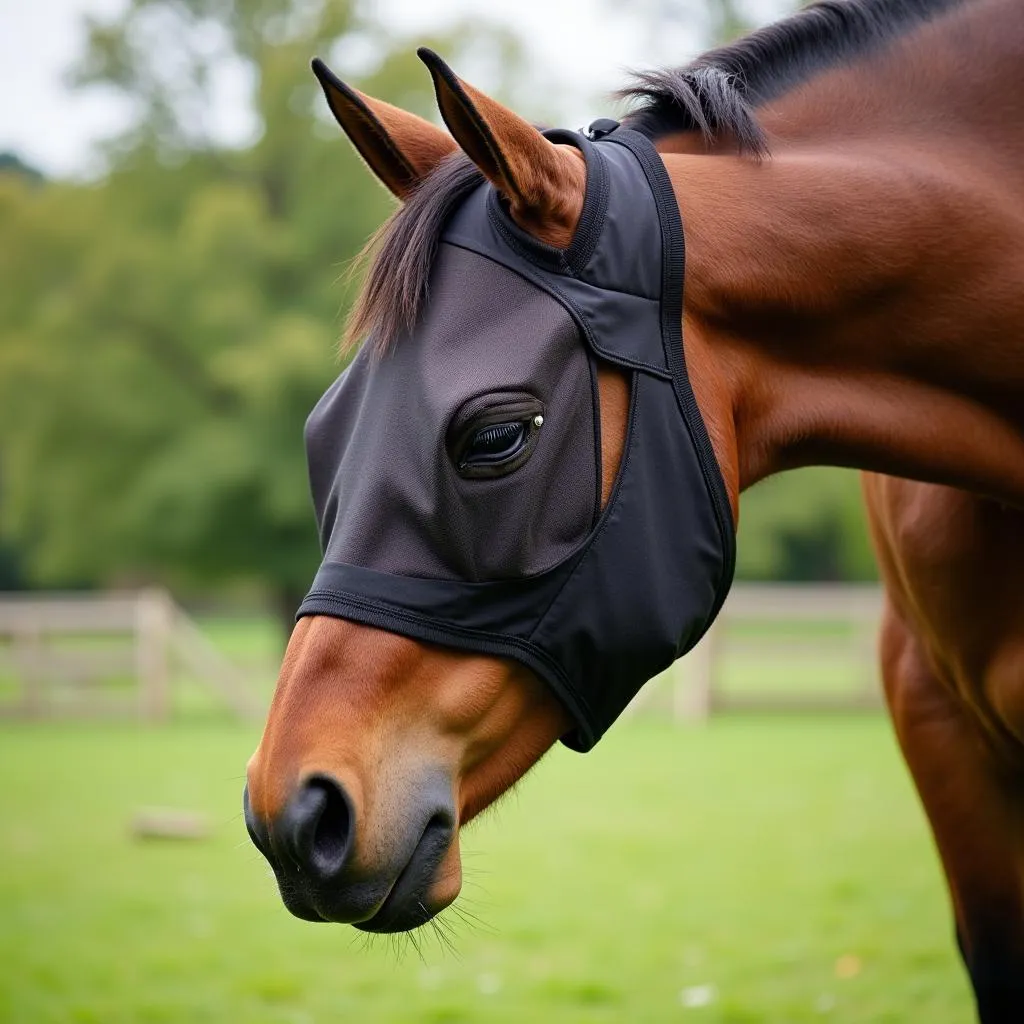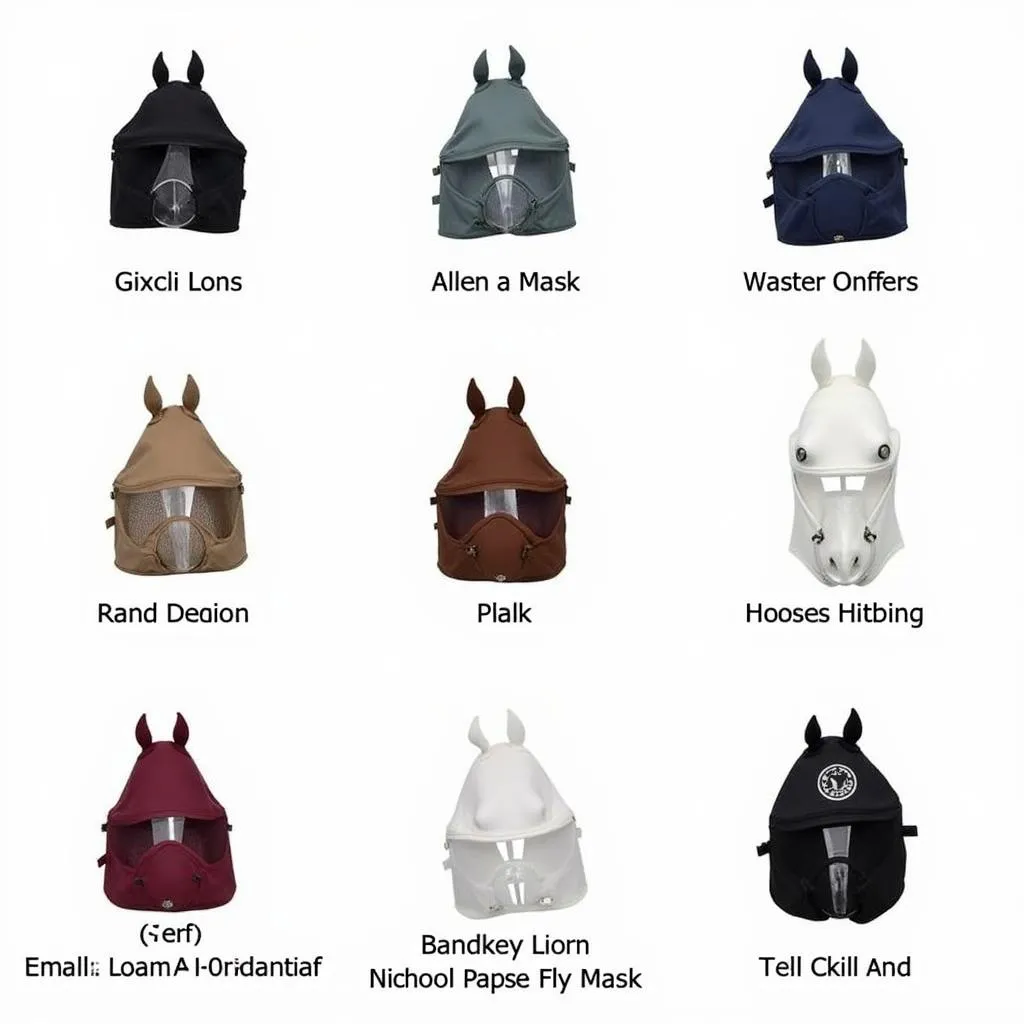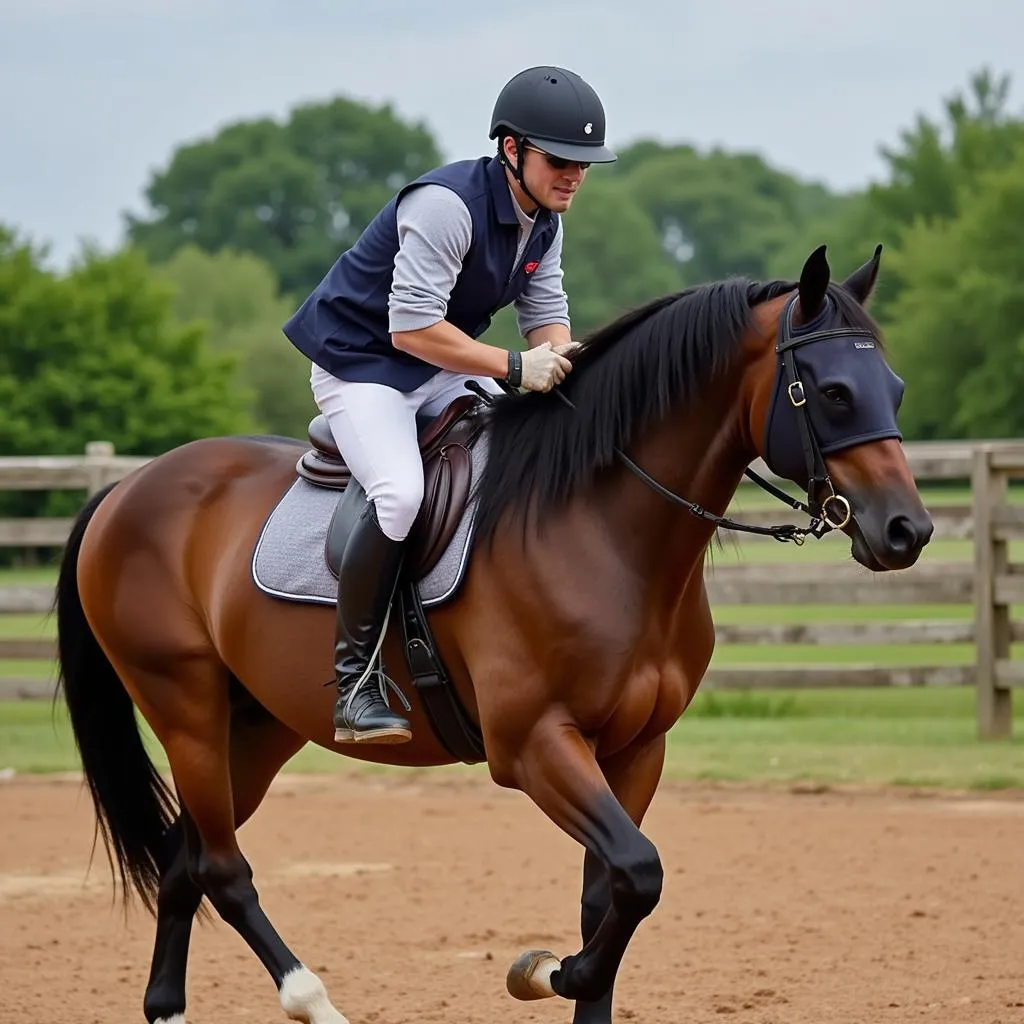Horse fly masks without ears are a popular choice for owners looking to protect their equine companions from pesky insects. But with so many options available, it can be overwhelming to know where to start. This guide will delve into the world of earless fly masks, equipping you with the knowledge to make the best decision for your horse.
Why Choose a Horse Fly Mask Without Ears?
 Horse Grazing in a Fly Mask Without Ears
Horse Grazing in a Fly Mask Without Ears
While traditional fly masks offer full-face protection, some horses find the ear coverings irritating or uncomfortable. This is where earless fly masks come in. They provide the same level of defense against flies, gnats, and other flying insects around the horse’s eyes and face, without the added bulk around the ears.
Advantages of Earless Fly Masks:
- Increased Comfort: Many horses find earless masks more comfortable, especially those sensitive around their ears or with thick forelocks.
- Better Breathability: Without ear coverings, these masks offer excellent ventilation, crucial in hot, humid weather.
- Unhindered Hearing: The open design ensures your horse’s hearing remains unimpaired, allowing them to stay alert to their surroundings.
Factors to Consider When Choosing an Earless Fly Mask:
Selecting the right fly mask is about more than just picking a style. Here are some key factors to bear in mind:
- Material: Look for durable, breathable fabrics like tightly woven mesh or nylon that can withstand regular wear and tear.
- Fit: A well-fitting mask is essential for both comfort and effectiveness. It should sit snugly without gaps or rubbing.
- Visibility: Opt for masks with clear or fine mesh around the eye area for unobstructed vision.
- UV Protection: If your horse is prone to sunburn or spends long hours in the sun, prioritize masks with UV-resistant materials.
- Durability: Choose masks made from high-quality materials with reinforced seams for long-lasting use.
 Various Horse Fly Masks Without Ears Displayed
Various Horse Fly Masks Without Ears Displayed
Finding the Perfect Fit: Measuring Your Horse
A poorly fitting mask can cause discomfort, rub sores, and even be ineffective at deterring insects. Follow these steps to measure your horse for an earless fly mask:
- Measure from the center of the forehead: Start at the point between the horse’s eyes, just below the browband area.
- Measure to the cheekbone: Extend the measuring tape along the side of the face to the point of the cheekbone.
- Consult Size Charts: Compare your horse’s measurements to the manufacturer’s size chart to determine the best fit. Don’t rely solely on breed or weight recommendations.
Tips for Introducing an Earless Fly Mask
Even the most comfortable fly mask can be met with resistance if not introduced properly. Follow these tips for a smooth transition:
- Start Slowly: Allow your horse to sniff and investigate the mask before attempting to put it on.
- Positive Reinforcement: Use treats, praise, and patience to create a positive association with the mask.
- Gradual Introduction: Begin by putting the mask on for short periods and gradually increase the duration as your horse becomes more accustomed to it.
- Monitor for Rubbing: Regularly check for any signs of rubbing or discomfort and adjust the fit as needed.
 Horse Ridden with an Earless Fly Mask
Horse Ridden with an Earless Fly Mask
Conclusion
Choosing the right Horse Fly Mask Without Ears is a crucial part of ensuring your horse’s comfort and well-being during fly season. By understanding the benefits, considering important factors, and taking the time to find the perfect fit, you can provide your equine friend with optimal protection from pesky insects while keeping them happy and comfortable.
Remember, a well-chosen fly mask is an investment in your horse’s health and happiness!
FAQs
Q: Can I leave my horse unattended with a fly mask on?
A: While fly masks are generally safe, it’s best to supervise your horse while they wear one, especially in the beginning. Ensure the mask is properly fitted and check for any signs of rubbing or discomfort regularly.
Q: How do I clean an earless fly mask?
A: Most fly masks can be hand-washed with mild detergent and cool water. Allow the mask to air dry completely before putting it back on your horse.
Q: My horse keeps trying to rub their mask off. What should I do?
A: Check the fit of the mask to ensure it’s not too tight or loose. You can also try applying a fly repellent around the edges of the mask to deter rubbing.
Q: Are earless fly masks suitable for all horses?
A: While earless masks are a good option for many horses, some may still prefer traditional masks with ear coverings. Observe your horse’s individual preferences and consult your veterinarian if you have any concerns.
Q: Can I use an earless fly mask on my horse with a sensitive skin?
A: Look for masks made from soft, hypoallergenic materials like fleece or lycra binding around the edges. If your horse has any existing skin conditions, it’s best to consult your veterinarian before using a fly mask.
Need more help or advice? Contact us at Phone Number: 0772127271, Email: [email protected] Or visit our address: QGM2+WX2, Vị Trung, Vị Thuỷ, Hậu Giang, Việt Nam. Our customer service team is available 24/7 to assist you.